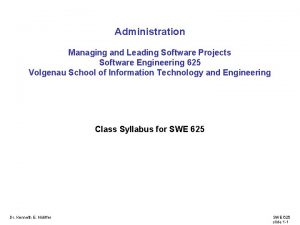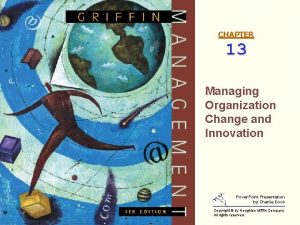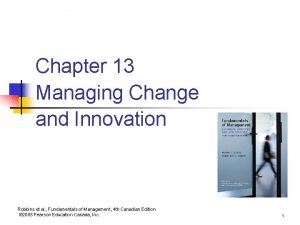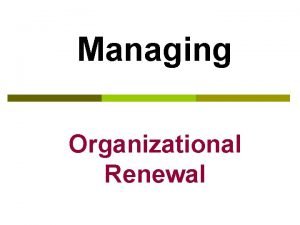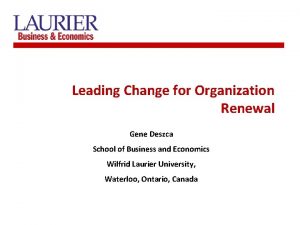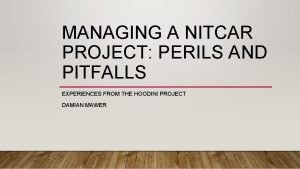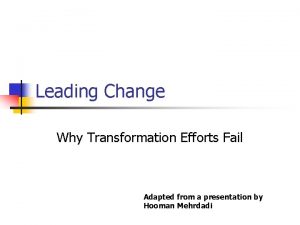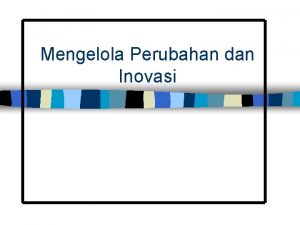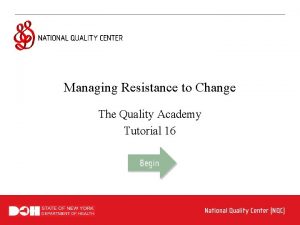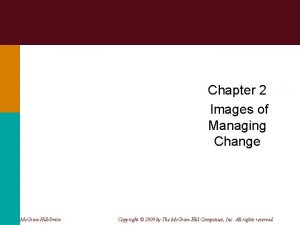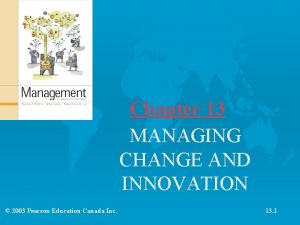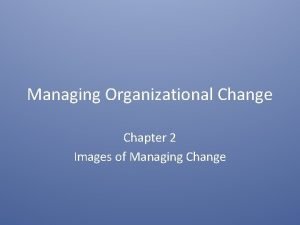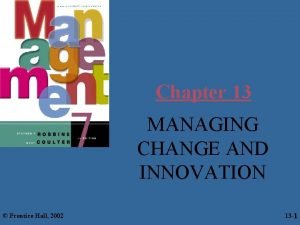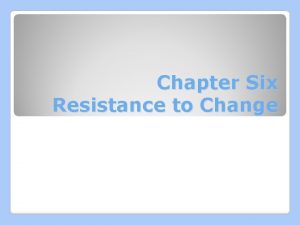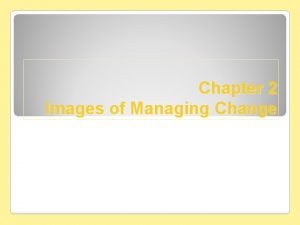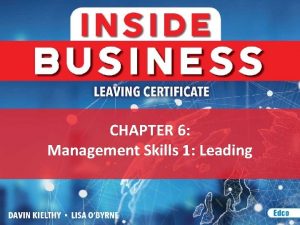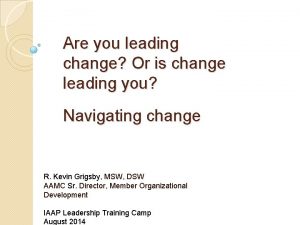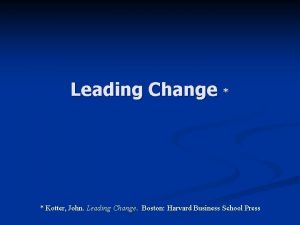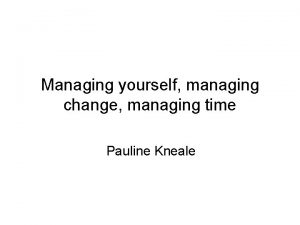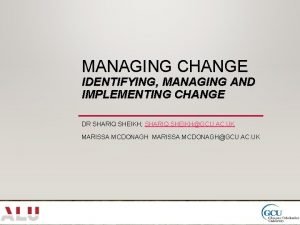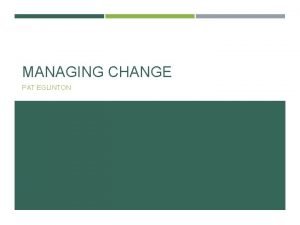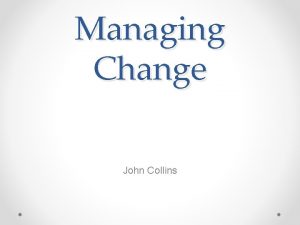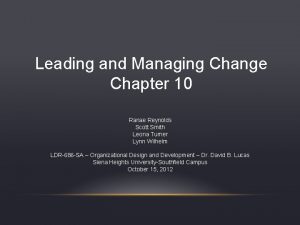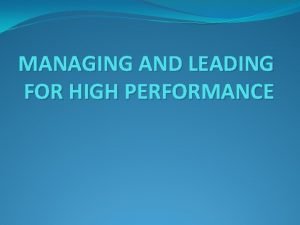CHAPTER 9 MANAGING AND LEADING CHANGE DEFINITION OF

















- Slides: 17

CHAPTER 9: MANAGING AND LEADING CHANGE

DEFINITION OF CONTROLLING Mockler • Systematic effort in determining a set of performance standards based on the objectives of planning the formation of a feedback system and the comparison between the actual performance and the set standards Robbins and Coutler • A process to ensure activities are implemented as planned and activities that are considered to be incorrect are corrected

PURPOSE OF CONTROLLING Internal and external changes in an organization Organization’s decentralization size and power and Mistakes Allocation of responsibilities

THE CONTROL PROCESS Set the standards Measure the actual performance Compare the actual performance with the standards Take correction action

Concurrent control Feedforward control Filtering or Yes/No control Types of control Feedback control

MANAGING ORGANIZATIONAL CONFLICT Anticipate Resolve Manage Prevent Identify

CHAPTER 10: MANAGING AND LEADING CHANGE

LEVELS OF ORGANIZATIONAL CHANGE 1 2 3 4 • Shaping and anticipating • Defining what businesses to be in and their core competencies • Reengineering processes • Incrementally improving processes

NEED FOR ORGANIZATIONAL CHANGE • EXTERNAL FORCES • INTERNAL FORCES ü Global competition ü Technological change ü International economic integration ü Global threats ü Global recession ü Maturation of markets in developed countries ü Structure change ü Strategic change ü Culture change ü Learning organizations ü Quality programs ü Knowledge management ü New business process, technologies and products

RESISTANCE TO CHANGE Individual’s predisposition toward change Surprise and fear of the unknown Climate of mistrust Fear to failure Loss of status and/or job security Peer pressure Past success Lack of reward system

CHANGE PROCESS Unfreezing Changing Refreezing

AREAS OF ORGANIZATIONAL CHANGE Strategy • When a company makes productivity improvements in order to reduce costs Technology • Technological change must be incorporated into the company’s overall systems Structure • If a company wishes to implement more participative decision making, it has to change its hierarchical structure People • All changes in work environment may affect people’s attitudes

MANAGING CREATIVITY AND INNOVATION • CREATIVITY Ø Production of new and useful ideas concerning products, services, processes and procedures by individuals or small groups of persons working together Ø Being independent and spontaneous and processing a problem solving attitude

MANAGING CREATIVITY AND INNOVATION • INNOVATION Ø Introduction of a new idea into the marketplace in the form of new product or new market or an improvement in organization or process Ø Ideas have little value unless they are converted into useful product and services

COMPONENTS OF CREATIVITY & INNOVATION Skill in creative thinking Intrinsic motivation Skills in task

ORGANIZATIONAL DEVELOPMENT An ongoing, systematic process of implementing effective organizational change Focused on understanding and managing organizational change Primary purpose is to develop the organization

OBJECTIVE OF OD Increase level of inter-personal trust Increase organization’s problem solving Increase employees’ level of commitment Increase cooperation and collaboration Confront problems Manage conflict
 Bobbin leading and flyer leading
Bobbin leading and flyer leading Managing and leading software projects
Managing and leading software projects Managing change and innovation
Managing change and innovation Chapter 13 managing change and innovation
Chapter 13 managing change and innovation Leading change and organizational renewal
Leading change and organizational renewal Leading change and organizational renewal
Leading change and organizational renewal Nitcar
Nitcar John kotter leading change why transformation efforts fail
John kotter leading change why transformation efforts fail Leading through change presentation
Leading through change presentation Chapter 18 organizational change and stress management
Chapter 18 organizational change and stress management Mengelola perubahan organisasi dan inovasi
Mengelola perubahan organisasi dan inovasi Managing complex change
Managing complex change Change management image
Change management image Contemporary issues in managing change
Contemporary issues in managing change Images of managing change
Images of managing change Contemporary issues in managing change
Contemporary issues in managing change Images of resistance to change
Images of resistance to change Images of managing change
Images of managing change

